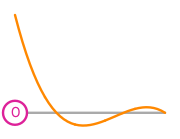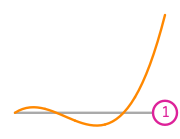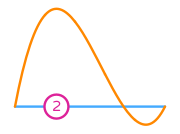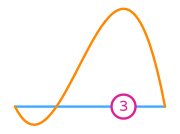an encyclopedia of finite element definitions
Degree 3 Lagrange on a interval
◀ Back to Lagrange definition page
- \(R\) is the reference interval. The following numbering of the sub-entities of the reference cell is used:
- \(\mathcal{V}\) is spanned by: \(1\), \(x\), \(x^{2}\), \(x^{3}\)
- \(\mathcal{L}=\{l_0,...,l_{3}\}\)
- Functionals and basis functions:

\(\displaystyle l_{0}:v\mapsto v(0)\)
\(\displaystyle \phi_{0} = - 5 x^{3} + 10 x^{2} - 6 x + 1\)
This DOF is associated with vertex 0 of the reference cell.
\(\displaystyle \phi_{0} = - 5 x^{3} + 10 x^{2} - 6 x + 1\)
This DOF is associated with vertex 0 of the reference cell.
\(\displaystyle l_{1}:v\mapsto v(1)\)
\(\displaystyle \phi_{1} = x \left(5 x^{2} - 5 x + 1\right)\)
This DOF is associated with vertex 1 of the reference cell.
\(\displaystyle \phi_{1} = x \left(5 x^{2} - 5 x + 1\right)\)
This DOF is associated with vertex 1 of the reference cell.
\(\displaystyle l_{2}:v\mapsto v(\tfrac{1}{2} - \tfrac{\sqrt{5}}{10})\)
\(\displaystyle \phi_{2} = \frac{5 x \left(2 \sqrt{5} x^{2} - 3 \sqrt{5} x - x + 1 + \sqrt{5}\right)}{2}\)
This DOF is associated with edge 0 of the reference cell.
\(\displaystyle \phi_{2} = \frac{5 x \left(2 \sqrt{5} x^{2} - 3 \sqrt{5} x - x + 1 + \sqrt{5}\right)}{2}\)
This DOF is associated with edge 0 of the reference cell.



